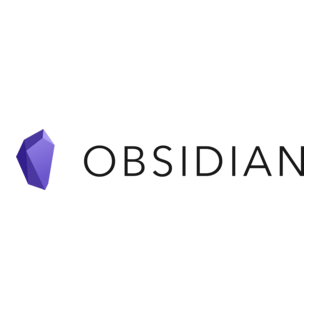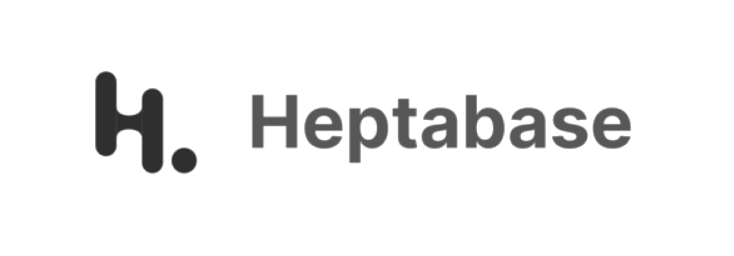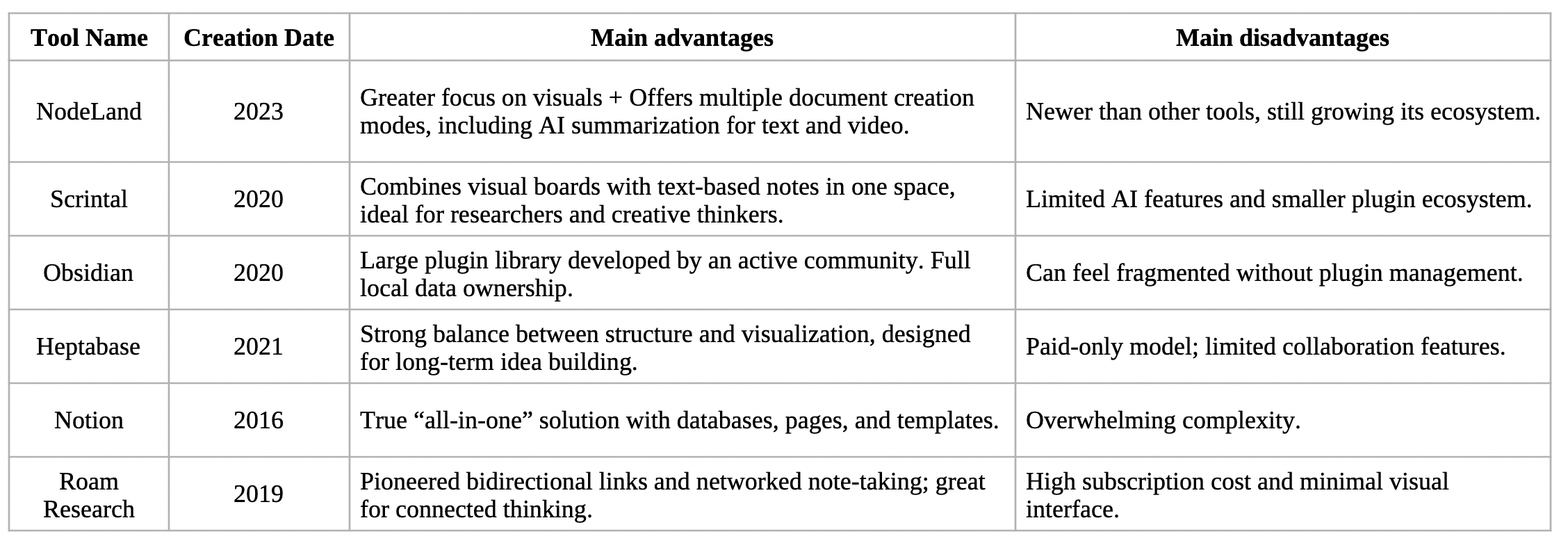
Quick Guide to PKMS and Visual Thinking
Personal Knowledge Management Systems (PKMS) help individuals organize, connect, and grow their knowledge, often through digital notes. Within this universe, tools vary widely in how they represent information. Some rely on lists and folders, while others adopt a graph-based approach, replacing traditional linear notes with an infinite canvas of interconnected ideas.
This visual approach has gained popularity among researchers, journalists, consultants, and other knowledge professionals — and a few fundamentals from cognitive psychology (a field that studies the phenomenon of learning) can help us understand why.
Meaningful Learning
The Theory of Meaningful Learning, developed by the american psychologist David Ausubel in the 1960s, posits that learning happens more efficiently when we connect new information into existing cognitive structures defined as schemas. This process of establishing conceptual hierarchies and relationships expands our knowledge in a meaningful way.
Take a moment and think about how we usually take notes in a traditional notebook: information is written sequentially, from the first page to the last. The problem is that the material covered later in a course is often deeply related to what was taught at the beginning, yet those connections aren’t obvious when notes are locked in a linear format.
A graph-based approach makes these relationships explicit, leveraging meaningful learning theory and mirroring how knowledge is actually structured, interconnected rather than strictly sequential.
Cognitive Fit Theory
Every intellectual challenge can be seen as a task: memorizing names, understanding chemical reactions, analyzing global trade… all require different mental representations.
The Cognitive Fit Theory, developed by researchers Iris Vessey and Dennis Galletta, suggests that the way information is represented affects how efficiently we can process it. In other words, the “fit” between a problem and its representation impacts both speed and accuracy.
Imagine a student trying to understand global oil trade. A table full of numbers might help a bit, but a world map with arrows showing export and import flows immediately conveys structure and meaning.
This happens because, as humans, we constantly use mental models to make sense of the world. When we choose a model that fits the nature of a problem, it becomes easier to solve.
Zettelkasten: The First Graph-Based Approach
The Zettelkasten method — literally “slip box” in German is one of the most remarkable PKMS ever. It was created by Niklas Luhmann, a German sociologist in the mid-20th century. Instead of keeping linear notebooks, he wrote every idea on a separate index card (zettel) and assigned it a unique ID number. Each card linked to others through cross-references, forming a web of interconnected thoughts.
Luhmann’s “box of slips” wasn’t just storage; it became a thinking partner. As his notes grew (eventually more than 90,000 cards!), he could follow trails of ideas, discover patterns, and develop complex theories with surprising ease.
Decades later, this analog system inspired a new generation of knowledge workers, researchers, and creators. Tools like Obsidian, Roam Research, and NodeLand resurrected the method in digital form — turning Luhmann’s wooden boxes into second brains for the information age.
The section below will present and discuss the characterists of some of these tools.
Tools Guide
When it comes to visualization of ideas and notes, I like to separate PKMS tools in two categories:
- Writing-Centered Tools: primarily text-based, with visualization as a secondary view.
- Visualization-Centered Tools: canvas-based, where ideas are explored visually first.
Writing Centered Tools
Obsidian

Obsidian has a strong community around it. Every note written is a markdown file that can be linked to other files, creating a network of notes. The user can visualize and interact with this network. A big advantage of Obsidian is that it supports plugins developed by it’s own community.
Notion

Notion is a “all-in-one” solution for teams and individuals tying to manage a knowledge (or personal knowledge) base. It is definitly a worth-trying tool. The main point is that it has so many features that it is quickly becomes hard to use. The editor is great and you can basically do anything with it.
Roam Research

Instead of organizing information in folders or linear documents, Roam lets you link ideas bidirectionally, meaning every note can connect to any other. This creates a living web of interrelated thoughts, where insights naturally resurface and connections emerge over time. Many researchers, writers, and knowledge workers use Roam as a “second brain”, a space where scattered notes transform into structured understanding.
Visualization Centered Tools
Scrintal

Scrintal blends visual mapping with note-taking. Each note lives on a digital canvas as a movable card, allowing users to connect, cluster, and rearrange ideas freely. It’s great for brainstorming, research synthesis, and project planning, offering the freedom of a whiteboard with the structure of linked notes.
Heptabase

Heptabase takes the visual knowledge approach further, focusing on long-term learning and idea development. It organizes your thoughts in visual “cards” that can be grouped, tagged, and connected.
NodeLand

NodeLand pushes visual thinking to the next level. Built around the idea of “visual structured documents,” it turns traditional note-taking into dynamic mind maps. Users can create maps manually or automatically through AI, summarizing documents, videos, and even entire topics into interactive visual representations.
Comparative Table
| Tool Name | Creation Date | Main advantages | Main disadvantages |
|---|---|---|---|
| NodeLand | 2023 | Greater focus on visuals + Offers multiple document creation modes, including AI summarization for text and video. | Newer than other tools, still growing its ecosystem. |
| Scrintal | 2020 | Combines visual boards with text-based notes in one space, ideal for researchers and creative thinkers. | Limited AI features and smaller plugin ecosystem. |
| Obsidian | 2020 | Large plugin library developed by an active community. Full local data ownership. | Can feel fragmented without plugin management. |
| Heptabase | 2021 | Strong balance between structure and visualization, designed for long-term idea building. | Paid-only model; limited collaboration features. |
| Notion | 2016 | True “all-in-one” solution with databases, pages, and templates. | Overwhelming complexity. |
| Roam Research | 2019 | Pioneered bidirectional links and networked note-taking; great for connected thinking. | High subscription cost and minimal visual interface. |

I hope you enjoyed this explanation of PKMS + Visual Thinking. Did you miss a tool or disagree on something? Leave a comment :)